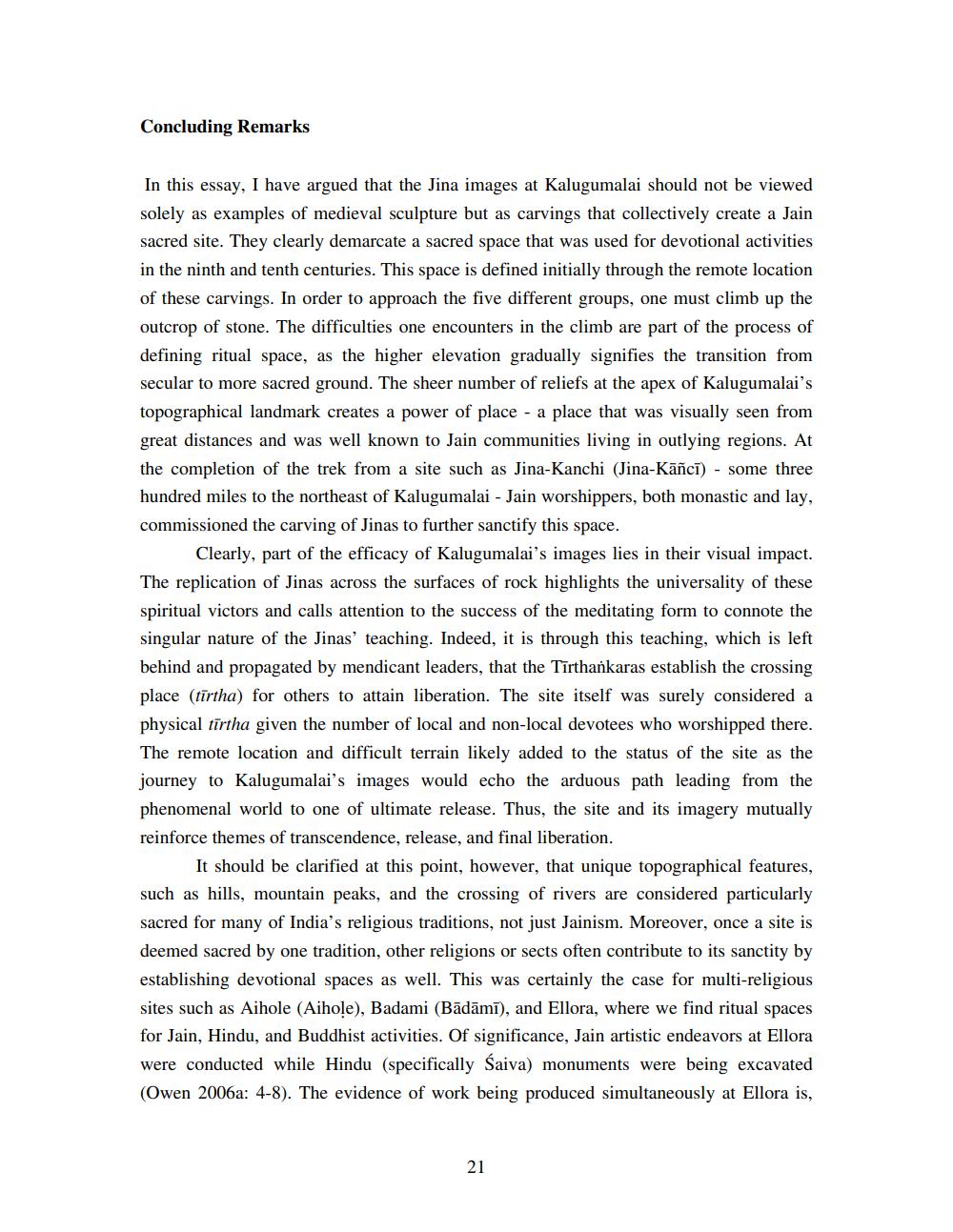________________
Concluding Remarks
In this essay, I have argued that the Jina images at Kalugumalai should not be viewed solely as examples of medieval sculpture but as carvings that collectively create a Jain sacred site. They clearly demarcate a sacred space that was used for devotional activities in the ninth and tenth centuries. This space is defined initially through the remote location of these carvings. In order to approach the five different groups, one must climb up the outcrop of stone. The difficulties one encounters in the climb are part of the process of defining ritual space, as the higher elevation gradually signifies the transition from secular to more sacred ground. The sheer number of reliefs at the apex of Kalugumalai's topographical landmark creates a power of place - a place that was visually seen from great distances and was well known to Jain communities living in outlying regions. At the completion of the trek from a site such as Jina-Kanchi (Jina-Kāñcī) - some three hundred miles to the northeast of Kalugumalai - Jain worshippers, both monastic and lay, commissioned the carving of Jinas to further sanctify this space.
Clearly, part of the efficacy of Kalugumalai's images lies in their visual impact. The replication of Jinas across the surfaces of rock highlights the universality of these spiritual victors and calls attention to the success of the meditating form to connote the singular nature of the Jinas' teaching. Indeed, it is through this teaching, which is left behind and propagated by mendicant leaders, that the Tīrthankaras establish the crossing place (tīrtha) for others to attain liberation. The site itself was surely considered a physical tīrtha given the number of local and non-local devotees who worshipped there. The remote location and difficult terrain likely added to the status of the site as the journey to Kalugumalai's images would echo the arduous path leading from the phenomenal world to one of ultimate release. Thus, the site and its imagery mutually reinforce themes of transcendence, release, and final liberation.
It should be clarified at this point, however, that unique topographical features, such as hills, mountain peaks, and the crossing of rivers are considered particularly sacred for many of India's religious traditions, not just Jainism. Moreover, once a site is deemed sacred by one tradition, other religions or sects often contribute to its sanctity by establishing devotional spaces as well. This was certainly the case for multi-religious sites such as Aihole (Aihole), Badami (Bādāmī), and Ellora, where we find ritual spaces for Jain, Hindu, and Buddhist activities. Of significance, Jain artistic endeavors at Ellora were conducted while Hindu (specifically saiva) monuments were being excavated (Owen 2006a: 4-8). The evidence of work being produced simultaneously at Ellora is,




